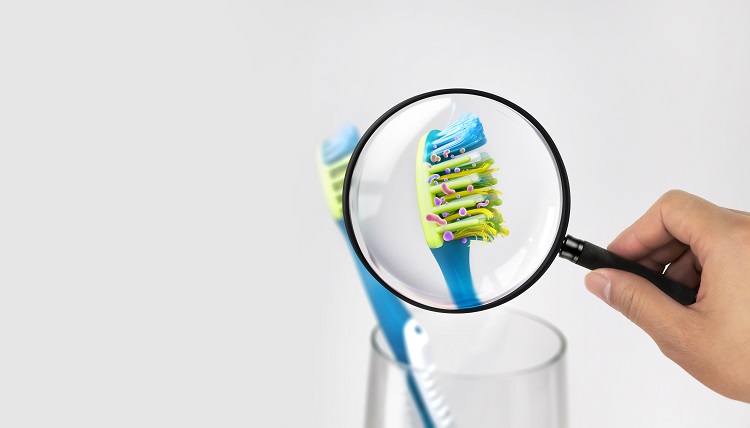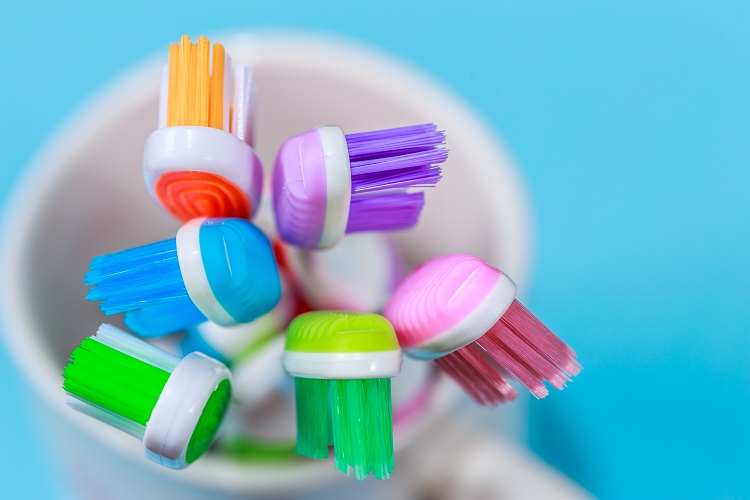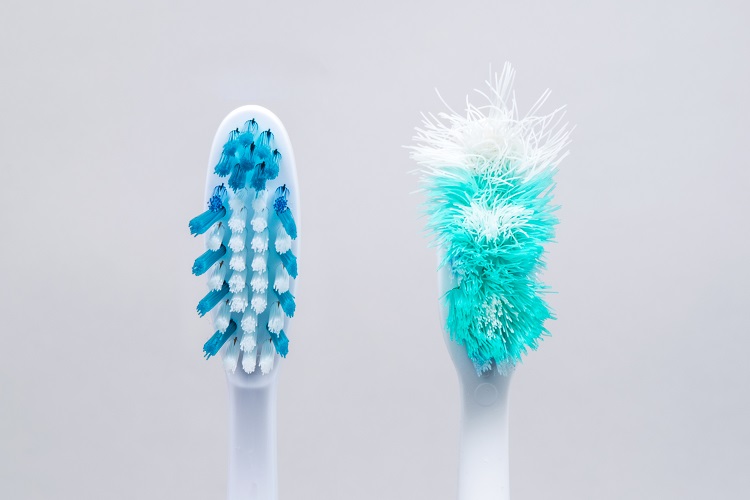Potential dangers of toothbrushes
A toothbrush can contain 10 million bacteria or more, including E. coli and staph. This information may sound a bit scary, but it is okay because the inside of the mouth is also full of bacteria so toothbrush will not make you sick more.
However, you should still learn how to clean the brush to maintain the best oral health.
Truths about toothbrushes

At any given time, there will be about 100 to 200 species of bacteria existing inside the mouth. Even dental plaque is considered a shelter for bacteria. However, they are nothing to worry about unless there is an imbalance between good and bad bacteria in your mouth.
Plus, a toothbrush is like a magnet that attracts bacteria. If you leave your toothbrush next to the toilet sink, they can become contaminated with bacteria while you wash your hands and accidentally splash water. At this time, the risk of an imbalance bacterial system in the oral cavity will increase.
Toothbrush and toilet
Have you ever thought about what happens when you flush while the toilet lid is open? Bacteria and viruses that spread when you flush water will survive in the air long enough to linger on bathroom surfaces. One study found that bacteria causing diarrhea can "fly" higher than 25.4cm when you flush without toilet lid cover.
Therefore, leaving the toothbrush in the bathroom will certainly increase the risk of infection. A worse situation is when you accidentally drop your toothbrush on the floor, the "three seconds" rule will not help. The brush now comes into contact with the bacteria in the toilet, plus the one from your feet while walking in the bathroom.
Keep the toothbrush in an airtight container

If you think that keeping the toothbrush in a closed box is better, forget that idea immediately. Toothbrush remains wet after each use and this allows mold to grow if you store them in an airtight container.
Moreover, when you put all family members' brushes in the same container, the bacteria will spread around if the bristles touch each other. This will have a lot of potential risks, especially when someone in the house is sick. In addition, germs can move from one brush to another when sharing toothpaste.
Can a toothbrush make you sick?
Hardly anybody gets an infection from their own toothbrush. Even when the brush has strange bacteria, the body's immune system is still doing a good job against germs. However, it is still better that you know how to preserve toothbrush properly to minimize the risk of disease.
Get to know 15 common oral diseases and how to prevent them.
How to keep the toothbrush clean?

If you want to keep your toothbrush clean and reduce the bacteria’s buildup on it, check these out:
- Replace the toothbrush: Replace the toothbrush every 3 to 4 months after use or when the bristles start to harden, become worn and frayed. This will help you clean your teeth more effectively and eliminate harmful germs. For children, toothbrushes should be renewed more often than adults.
- Choose toothpaste: Most kinds of toothpaste have the ability to kill pathogenic bacteria, but those containing triclosan/copolymer are often better than regular fluoride toothpaste.
- Do not share a toothbrush: No matter how much you wash it, you cannot get rid of all the bacteria on someone else's toothbrush. If you want to be safer, use your own toothpaste or try to help your family members know how to get the toothpaste without directly touching the mouth of the tube with the toothbrush.
- Clean the bristles: Occasionally, soak the toothbrush head into hydrogen peroxide or antibacterial mouthwash, especially if you accidentally drop the toothbrush on the floor. In addition, you should also clean the bristles with water after each brushing to wash away any toothpaste that remains on it.
- Close the toilet lid before flushing: If you leave the toothbrush in the toilet, make sure to close the toilet lid before flushing.
- Expose the toothbrush to air: Do not store toothbrushes in an airtight container. If you keep them in a cupboard, make sure there is enough air getting in so that the brushes can naturally dry between brushings. If your family stores all the toothbrushes in one place, make sure the heads do not touch.
Learn more: How to build a good brushing teeth habit?
Remember that bacteria can cause gum disease, tooth decay, and bad breath. Thus, you need to brush your teeth and floss regularly. You can rinse your mouth with an antibacterial mouthwash before brushing your teeth to eliminate bacteria before they get onto your toothbrush and multiply there.
Reference source
Services
Working Time
- Monday - Friday: 08:00 - 19:00
- Saturday: 08:00 - 18:00
- Sunday closed
Contact Info
- Hotline 1: (+84) 908 321 455
- Hotline 2: (+84) 931 857 885
- Mobile: (+84) 8 3925 8778
- Phone: (+84)2 838 258 778
- info@dentalrose.net
- rosedentalclinicvn@gmail.com
 English
English  Tiếng Việt
Tiếng Việt

